Art & Exhibitions
I Went Searching for Vermeer in the Dutch Master’s Home City of Delft. Here’s What I Found
A tour of the Dutch Golden Age artist's hometown completes Rijksmuseum's blockbuster retrospective.
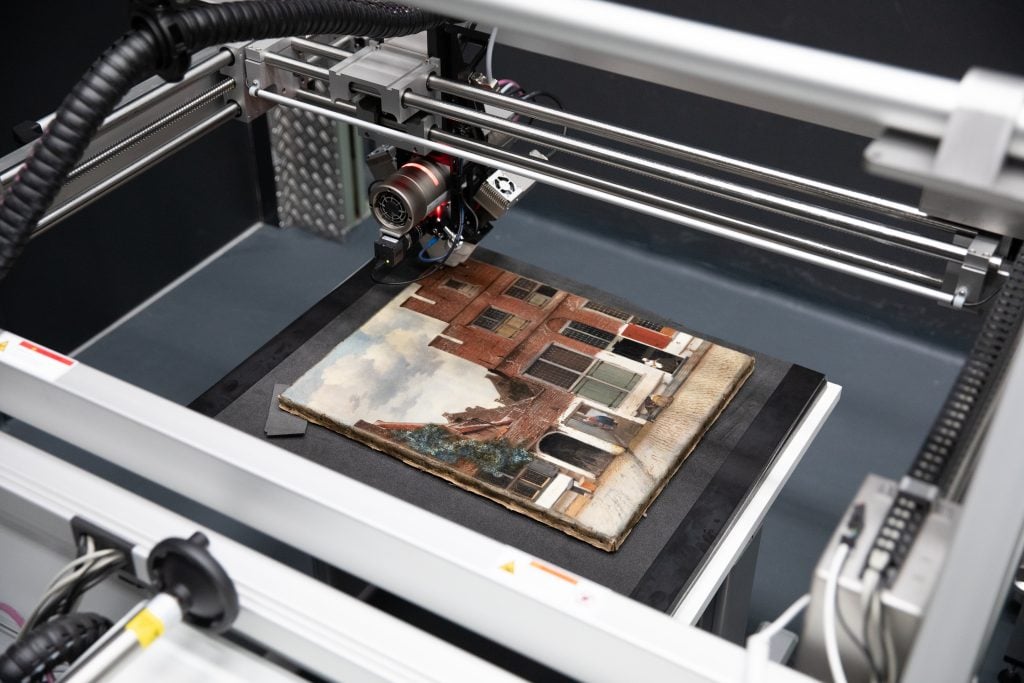
A tour of the Dutch Golden Age artist's hometown completes Rijksmuseum's blockbuster retrospective.

Vivienne Chow

It was a chilly morning as I found myself standing at Oude Langendijk 25 in the Dutch city of Delft, the hometown of Johannes Vermeer and his wife Catharina Bolnes. Here, the famed artist created the majority of his small oeuvre of 37 known paintings, many of which are now on view at the Rijksmuseum, in Amsterdam.
A visit to the Delft, though just an hour from the Dutch capital, is like time traveling back to the 17th-century Netherlands when his enigmatic masterpieces were created. The blockbuster “Vermeer” show at the Rijksmuseum reunites 28 paintings in a thoughtful presentation, making extra space to accommodate the hundreds of thousands of visitors expected to come over the next few months. Yet a journey into the world of Vermeer is incomplete without a tour to the town where the artist was born in 1632, where he rose to fame, and died in 1675 at just 43 years old.
Though much of his life is shrouded in mystery, it is still possible to retrace his footsteps.

Oude Langendijk 25 in Delft, where Vermeer’s home was located. Photo: Vivienne Chow.
The actual location of scenes in some of his best-known cityscapes can be identified in Delft, including the panorama depicted in View of Delft (1660-61) and the quiet scene in The Little Street (1658-59), which are both on view at the Rijksmuseum. Delft was also a well-off town in the 17th century before the troubled year of 1672 when France and England went to war with the Netherlands, paralyzing the art trade which caused great financial stress to Vermeer, who died a few years later, leaving mounting debt to his widowed wife.
A tour through the city itself brings Vermeer’s biography to life. The city is marked by conflicts, including the Reformation and the Eighty Years War. There is also the famous Nieuwe Kerk, a Protestant church where the artist was baptized on in 1632. Delft is home to the St Luke’s Guild in Delft, with which Vermeer first registered as a master at the very beginning of his career in 1653, which is now the city’s Vermeer Center. The Oude Kerk, a Catholic church is nearby, where the artist and some of his children and wealthy Catholic mother-in-law are buried.
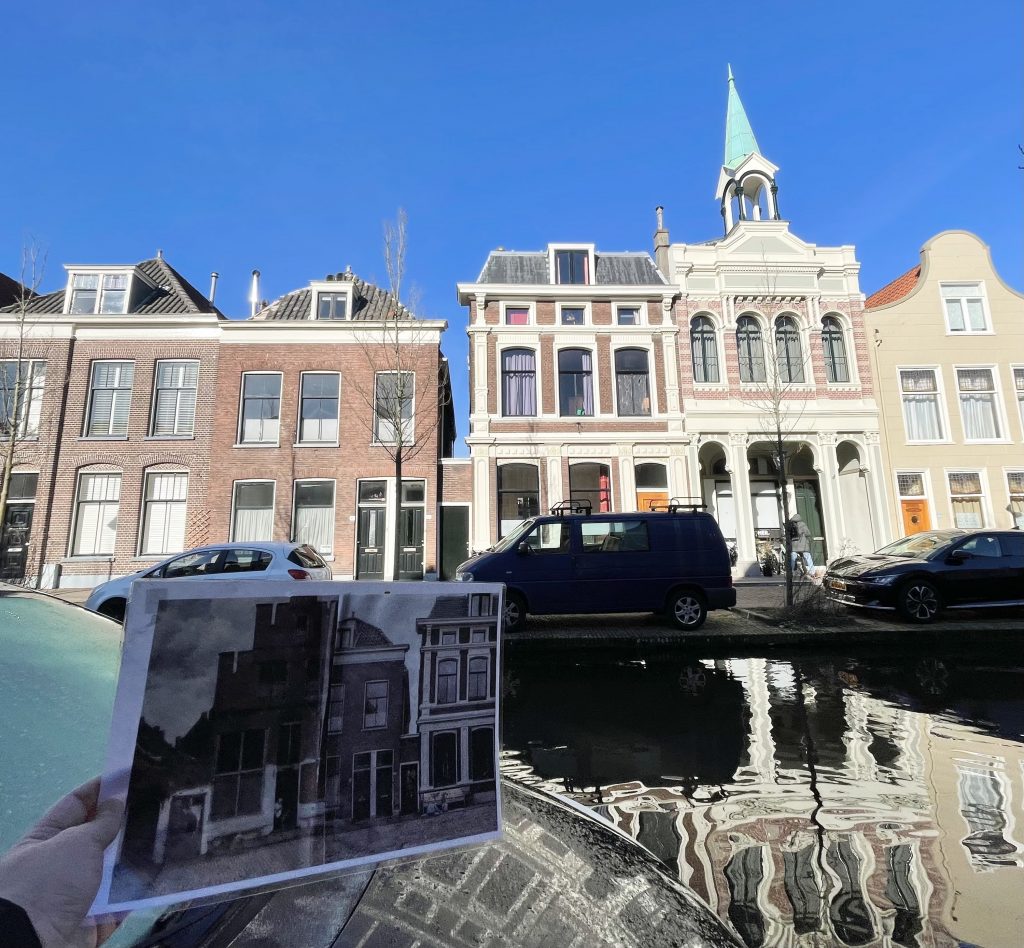
The location in Delft that was believed to be featured in Vermeer’s The Little Street. Photo: Vivienne Chow.
More fascinating is the exhibition “Vermeer’s Delft” at Museum Prinsenhof Delf, which presents no artworks by the artist, but instead transports visitors into the artist’s world through some 100 historic objects, including related works of art and archival records that introduce Vermeer’s acquaintances and influences.
The painting The Crucifixion (c. 1617-1620) by Jacob Jordaens, is on view. The work, which was in the artist’s personal collection, is depicted in the backdrop of Allegory of the Catholic Faith (c.1670-74). The Procuress (1622) by Dirck van Baburen, which may have influenced Vermeer’s own version by the same title from 1656 (it is currently on show at the Rijksmuseum) is also on view in Delft.
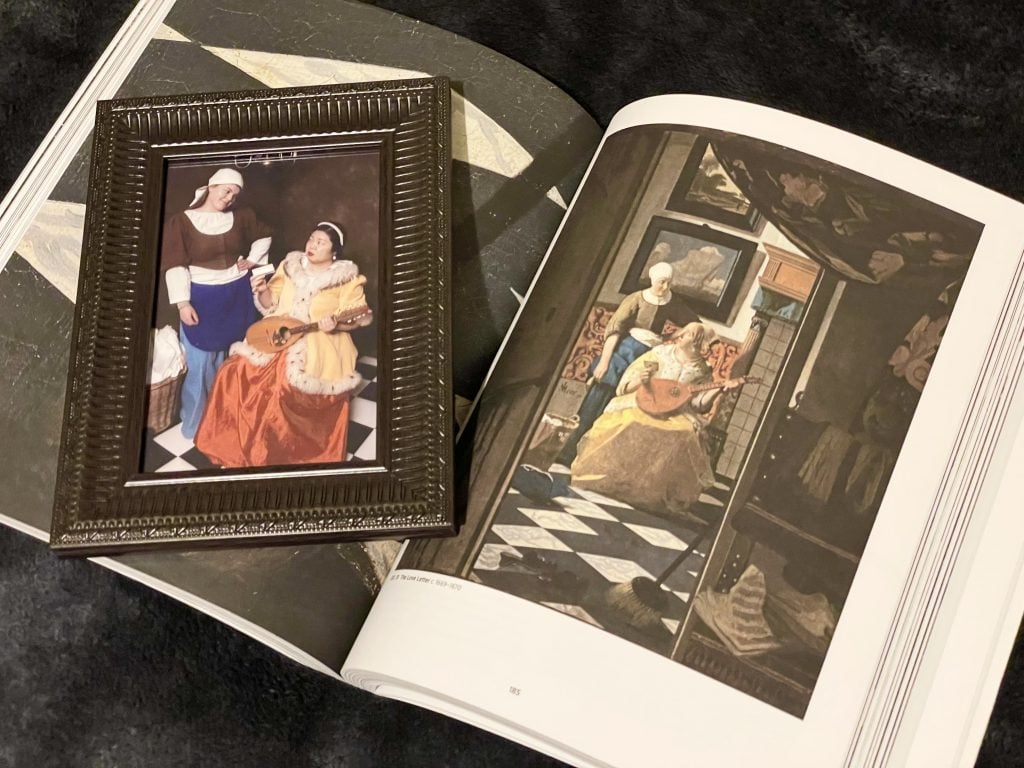
The city is taking advantage of the major show in Amsterdam, planning for overflow traffic. Walking tours and events coinciding with the opening of “Vermeer” are on the offer; elsewhere, a photography store is equipped with props and costumes for visitors to dress up and pose as one of the characters from Vermeer’s paintings. (I took advantage of the opportunity to play a character from Vermeer’s The Love Letter (c. 1669-70), and invited the shop’s assistant to join me.)
“There isn’t a lot known about Vermeer, but if you put all the pieces next to each other, you can see how the city influenced him,” said Hester Schölvinck, Museum Prinsenhof Delft’s head of collection and exhibition. “As an artist, he was standing in the middle of society, very in touch with his surroundings.”
“Vermeer’s Delft” is also on view until June 4 at Museum Prinsenhof Delft.
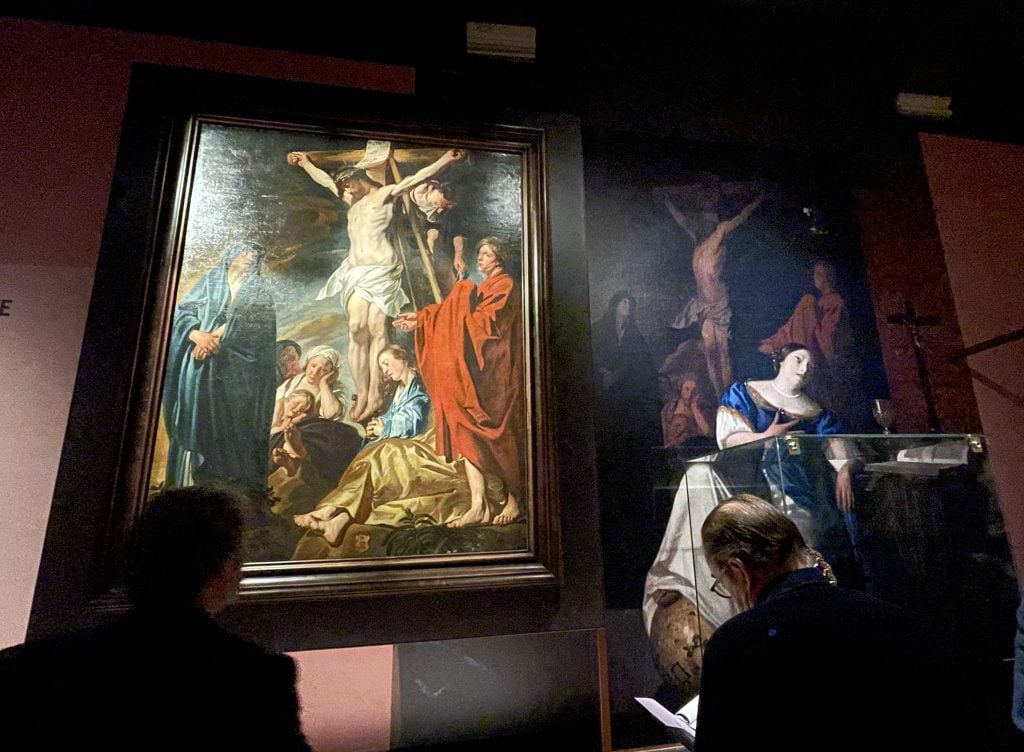
The Crucifixion (c. 1617-1620) by Jacob Jordaens (left), on show at Museum Prinsenhof Delft, is the painting in the backdrop of Vermeer’s Allegory of the Catholic Faith (right). Photo: Vivienne Chow.
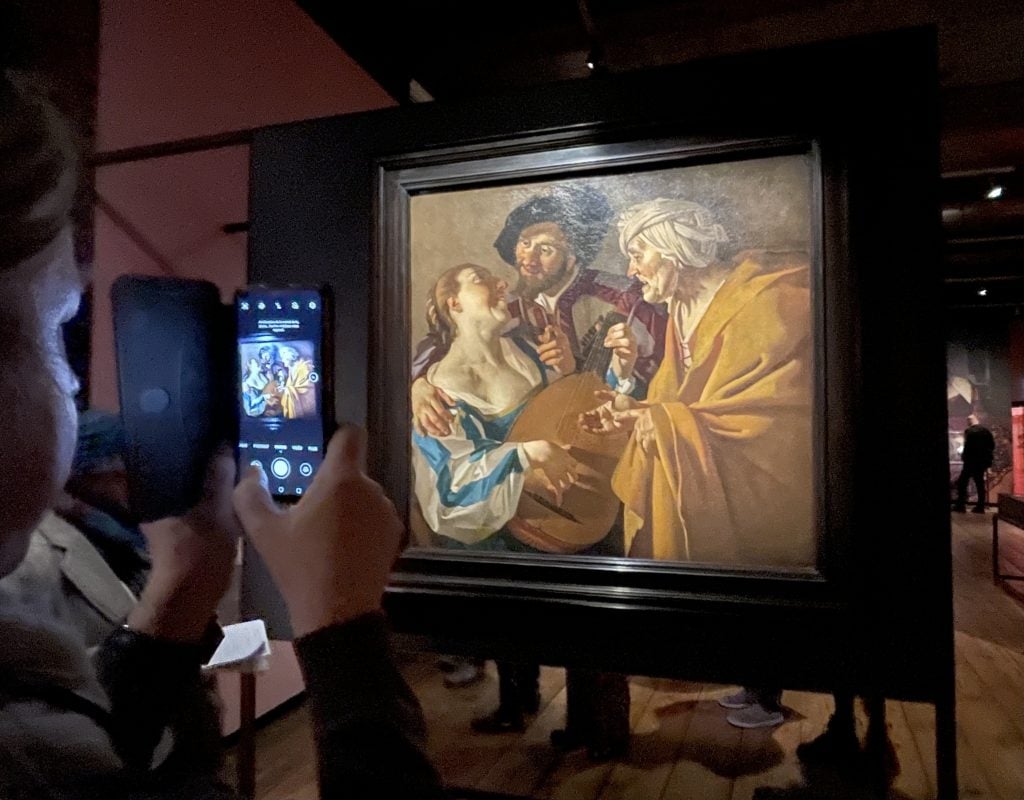
The Procuress (1622) by Dirck van Baburen on show at Museum Prinsenhof Delft. It may have played a role in Vermeer’s version that is currently on show at the Rijksmuseum. Photo: Vivienne Chow.
More Trending Stories:
Rising Photographer Dannielle Bowman Wants to Make Images That Function Like Memories
See Inside Actor Jim Carrey’s Art-Filled Home, Now on the Market for $29 Million (Art Not Included)